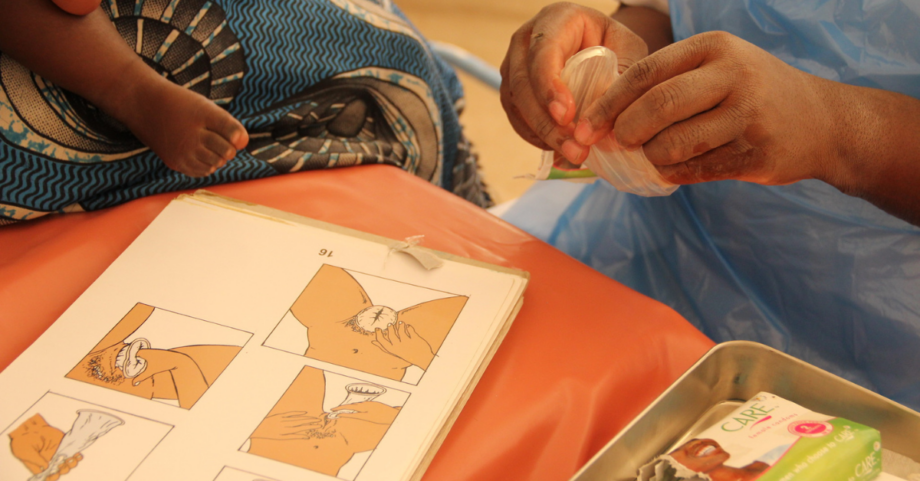If you're committed to practicing safer sex, chances are you know pretty much all there is to know about condoms for penises. But did you know that female condoms exist as well? They're not the usual go-to for protection against sexually transmitted diseases (STDs) and pregnancy, but they are available as an alternative to traditional condoms.
Without further ado, let’s dive into all things female condoms.
What is a female condom?
Let's start with the obvious question: what on earth is a female condom? It's an internal condom that's worn inside the vagina to lower your risk of STDs and pregnancy. This is much different from male or external condoms, which are worn on the outside of the penis.
By wearing a female condom, you get much more control over your sexual health because you don't have to rely on a male partner to bring a condom or talk to them about wearing one. You can insert the condom ahead of time, so you don't even have to pause the fun, or you get to choose exactly when you want to put it in. With female condoms, you get to take charge of safer sex practices.
An added bonus of female condoms: some people experience more clitoral stimulation during oral and penetrative sex or toy play when wearing internal condoms than they do when their partner wears an external condom.
How do female condoms work?
So, how exactly do female condoms work? There's a ring on each end of the condom. One ring is placed inside the vagina, toward the back of the canal, and fits over the cervix. This closed ring keeps the condom in place. The other ring is open and rests on the outside of your vagina, covering the vulva. As you “do the deed,” the semen gets trapped in the pouch, preventing any contact with your vagina and cervix. This protects you from STIs and keeps sperm from reaching an egg.
You might have a few concerns about how comfortable a female condom is. Understandable, but don’t fret — these condoms are designed with your comfort in mind. As long as the condom is properly inserted, you should barely notice it's there. It shouldn’t affect your sexual escapades, and may even enhance them!
How to Insert a Female Condom
For female condoms to work well, you’ll need to know how to use them properly. Research reveals that these condoms have an effectiveness rate of about 75%-85% with normal use, which increases to 95% when they are used correctly each time.
Here’s a step-by-step guide:
- Find the inner ring of the female condom and hold it in between your thumb and middle finger.
- Gently squeeze the ring together and insert it as far back into your vagina as possible. You’ll want to ensure that the ring is past your pubic bone.
- Let the outer ring sit outside your vagina.
- Double-check to ensure the condom hasn’t gotten twisted in your vagina.
- Apply a few drops of water-based (no oils) lubricant on the penis before and during sexual intercourse as needed.
- After sex, without standing up, squeeze and twist the outer ring to ensure the semen stays put in the condom.
- Gently pull the condom out of your vagina and dispose of it appropriately. Never flush condoms down the toilet.
If you're a visual learner, check out this visual guide for inserting female condoms from Centers for Disease Control and Prevention (CDC).
You may want to practice putting the condom in a few times prior to sexual intercourse to get comfortable with it.
Types of Female Condoms & Materials
There are two types of condoms for women available in the United States: FC2 and Original FC1.
FC1 was an internal condom made of polyurethane that was safe for folks with latex allergies. However, it was very thin and pretty expensive. FC1 condoms are no longer manufactured, but you may still be able to find them in some places.
FC2 is the newer version of the female condom. It’s made of the substance nitrile and is latex-free. Unlike FC1, FC2 female condoms are much more affordable, and their material is more durable than polyurethane.
Female Condoms and STD Protection
Female condoms are a great barrier method for protecting you against STDs. Because they cover the internal and external parts of your vagina, these condoms create a pretty solid barrier that can reduce the transmission of infections during vaginal sex. This barrier can prevent the exchange of bodily fluids — the main way STDs are spread — that could carry gonorrhea, chlamydia, or HIV.
The Bottom Line
The female condom is a safe and very effective barrier method for preventing pregnancy and STDs. They’re just as effective as male condoms, and they can give you more control over your sexual health.
The next time you need to re-up on condoms, consider grabbing a box of internal condoms to add to your sexual health toolkit.




